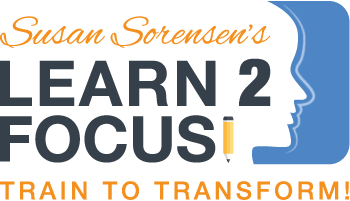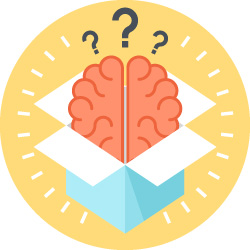What is the Connection Between Working Memory and ADHD?
/According to Wikipedia, working memory is “the system that is responsible for the transient holding and processing of new and already stored information, an important process for reasoning, comprehension, learning, and memory updating.”
Simply put, working memory is the ability to use your memory while in the act of doing something else.
It was once thought that short term memory was a single storage unit in our minds, holding limited amounts of input for short time periods with limited processing, and with no sub units of storage at work.
But as time and research progressed, the existence and function of working memory became apparent.
Now it is believed that working memory is key to cognitive success and is more than a single store short-term memory system in which you store information for a short while and repeat it.
Working memory is used to manipulate or rework information to accomplish a goal, like using a series of numbers you just heard to solve a math problem.
Working memory is actually comprised of different systems responsible for different types of information.
- First, there is the Central Executive system. It is in the driver’s seat. It directs input or data to the working memory’s two subsystems and manages processes like mental arithmetic and problem solving, among other cognitive activities.
- Next, the Visuo-Spatial Sketchpad(VSS), also know as the “inner eye,” receives information from the Central executive. The VSS retains and processes input in visual or spatial contexts. It is a means of mental navigation.
- Finally, the Phonological Loop (PL) manages spoken and written information. It is comprised of two components of its own:
- The phonological store or the “inner ear.” This portion of the loop is connected to speech perception and stores speech-based information for up to 2 seconds.
- The articulatory control process or the “inner voice.” This part of the loop is connected to the production of speech and is used for the rehearsal and retaining of verbal material from the phonological store.
We call this the Baddley & Hitch Working Memory Model.
So, what does all this have to do with ADHD?
A lot.
Being able to recall and utilize relevant information while participating in other activities is key to success in all areas of life, especially academic and social arenas.
The sustained effort necessary for paying attention and overcoming distraction are part of working memory, so when this part of executive function is weakened, the problems with attention, learning, and processing language result.
The “mental workspace” afforded by working memory is compromised in people with ADHD. Learning isn’t layered, its fragmented and disrupted because he or she is constantly losing hold of important pieces of the big picture.
This memory deficiency gets in the way of skills necessary for ADHD children to grow as proficient problem solvers, readers, or “finishers” of many tasks, simply because instructions and core principles don’t stick with them.
One of the key characteristics of the disorder is that people with ADHD often have an extraordinary memory for things that happened in the distant past but struggle to recall instructions from a few moments before or articulate thoughts they just had.
- The ability to access information when they want it or need it is stuck.
- Frustration may lead to inaccurate assumptions about intelligence or ability.
- Information just seems to disappear until long after they need it.
- People with ADHD have a problem of information retrieval on demand.
As you might imagine, medication will not significantly improve a problem with working memory. People with ADHD would be much better served by interventions that could assist them in training their brains for expansion of their “mental workspace.”

